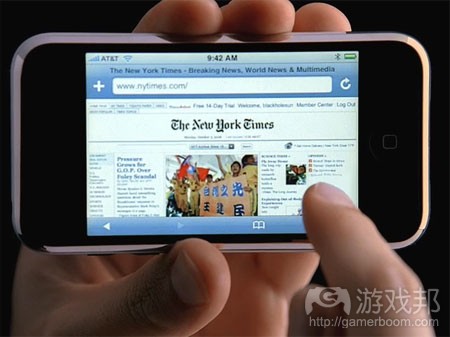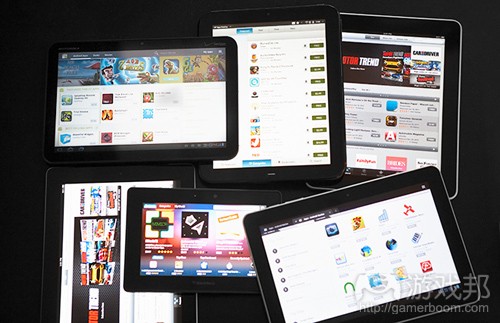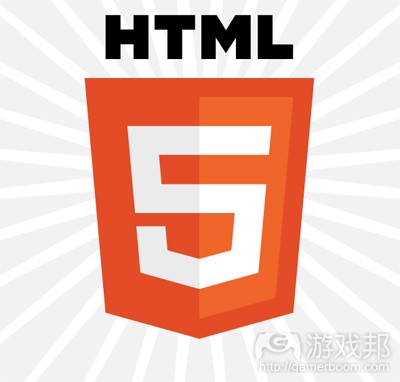每日观察:关注平板电脑广告效能优于智能手机(2.9)
1)网络分析公司StatCounter最新报告显示,全球移动互联网使用率已从2011年的4.3%增长至2012年1月的8.5%,这种趋势反映出智能手机普及率正在新兴市场及西方发达国家快速发展。
在移动设备制造商中,诺基亚仍是领先力量,在印度影响力最大。苹果居于其次,但在英美市场最有影响力。RIM在英国市场的影响力仅次于苹果。
以下是2009-2012年1月份全球手机(不包括平板电脑)移动互联网使用率的数据:
2009年1月:0.7%
2010年1月:1.6%
2011年1月:4.3%
2012年1月:8.5%
2)尼尔森最新数据显示,平板电脑的广告效能优于电视和智能手机设备。报告显示,有40%英国受访者认为,平板电脑上的广告“容易让人接受”,而对智能手机上的广告有同种看法的受访者仅30%。
平板电脑用户对该设备上的广告更有印象,48%受访者用户至少每天一次想起自己曾在平板电脑上看过的广告,手机用户的这一比例仅37%。
有10%用户通过平板电脑网购,手机用户的这一比例为7%。28%用户通过平板电脑查找自己在电视广告看到的商品信息,智能手机用户的这一比例则是18%。
有64%用户“每周有数次”一边看电视一边使用平板电脑,尼尔森欧洲数字战略主管David Gosen认为,将电视广告、应用程序以及搜索元素结合在一起,可传递强大而富有粘性的品牌信息,了解用户习惯有助于广告商获得成功。
3)澳大利亚开发商Halfbrick Studios最近宣布《Jetpack Joyride》这款iOS动作游戏下载量已超过1400万次(游戏邦注:该游戏于2011年8月发布)。
该游戏在2011年12月中旬转向免费增值模式,在此之前其付费版本销售额达100万美元;5-10%玩家曾在游戏中至少消费1美元。
Halfbrick另一款于去年8月移植到Xbox Live Arcade的体感游戏《Fruit Ninja Kinect》目前售价为800个Microsoft Point(10美元)。
4)Facebook产品总监Carl Sjogreen在最近的Inside Social Apps大会上表示,Facebook目前有4.25亿移动用户,其中有6000万用户使用第三方应用(游戏邦注:这里指绑定Facebook功能的应用程序),这些用户每月访问时间达3.2亿次,平均每名用户每月访问5次。
5)手机游戏公司Pocket Gems近日宣布旗下游戏下载量已突破6000万次,其中《Tap Zoo》下载量已超2300万次,其继作《Tap Zoo 2》在发布首周就收获100万用户。
该公司目前有110名成员,在过去三个月中发布了包括《Zombie Takeover》在内的6款游戏。由于App Store竞争加剧,Pocket Gem游戏在2011年中期并未晋升至排行榜较高名次,但该公司并未表示担忧,并认为用户会自己判断产品优劣。
6)HTML5框架技术公司Sencha产品管理高级总监Aditya Bansod最近表示,iOS是开发商从开发原生应用转向HTML5的最佳平台。
他指出最新版Android操作系统Ice Cream Sandwich虽然针对HTML5提供了许多技术支持,但存有一系列漏洞和API问题,其表现仍然逊于苹果iOS 5上的Safari,后者可支持更多API,并且画面效果更出色。所以移动浏览器领域的佼佼者仍属于苹果iOS 5。
尽管Android 4浏览器进步明显,也拥有更优质的视觉效果和渲染性能,但表现仍不及苹果平台的浏览器。
7)克罗地亚应用开发商ShoutEm最近发布了一份手机应用商店历史信息图表,回顾了从2008年到2011年的Android、iPhone、Ovi、App World和WinPho应用生态圈发展情况,其内容包括:
*苹果App Store于2008年7月上线时仅有500款应用,而2011年5月份其应用数量已超50万款,37%应用属于免费产品,付费应用平均售价3.64美元。
*Android Market于2008年10月上线时仅有50款应用,但2011年7月份时应用数量已突破25万款,总计下载量已达60亿次,
*黑莓App World于2009年4月上线,2011年7月时共有3万7176款应用。
*诺基亚Ovi Store于2009年5月上线,当时有1263款产品,90%属于付费内容,2011年7月其应用数量达8万3500款。
*Windows Phone Marketplace于2010年10月上线,2011年8月时应用数量为2万9704款。
(本文为游戏邦/gamerboom.com编译,拒绝任何不保留版权的转载,如需转载请联系:游戏邦)
1)Mobile web traffic is 8.5 per cent of total web traffic
by Tim Green
It’s doubled in a year – and the figure doesn’t even include tablets.
Web analytics company StatCounter says global internet usage through mobile devices leapt to 8.5 per cent in January 2012 from 4.3 per cent last year.
The figures surely reflect the surge in mobile web access from both emerging market users with no fixed web access and western users with faster and more sophisticated smartphones.
It says that, among OEMs, Nokia leads worldwide, most probably driven by its dominance in India. Apple is second globally but leads the US and UK markets. In the UK RIM is second only to
Apple.
“While global internet usage through mobiles is still under 10 per cent, the pace of growth is remarkable,” said Aodhan Cullen, CEO at StatCounter.
Global use of mobile devices to access internet (excludes tablets*)
Jan 2009: 0.7%
Jan 2010: 1.6%
Jan 2011: 4.3%
Jan 2012: 8.5%(source:mobile-ent)
2)Advertising on tablets is ‘more acceptable’
by Tim Green
New medium scores over TV and phones.
New data from Nielsen suggests that the tablet is emerging as a more effective and accepted channel for advertising than both the TV and the smartphone.
Its latest UK Connected Devices report said more UK users agree that ‘advertising is acceptable’ on their tablet (40 per cent) than on their smartphone (30 per cent).
They also remember ads better on their tablet, with 48 per cent recalling seeing an ad on their tablet ‘about once a day’ or more often, compared to just 37 per cent on their phone.
Meanwhile ten per cent made a direct purchase through their tablet, compared to seven per cent on their phone. And more users reached for their tablet (28 per cent) to look up product information for an ad they saw on TV, than their smartphone (18 per cent).
However, David Gosen, head of Nielsen’s digital strategy in Europe, did sound a note of caution in relation to the use of tablets as complementary TV devices.
He said: “Tablets are driving an increase in ‘dual screening’. This is both good and bad for advertisers.
“Consumers are unfortunately more distracted during TV ad breaks, with 64 per cent simultaneously using a tablet while watching TV at least ‘several times a week’.
“But intelligent, integrated campaigns with TV, app and search elements can deliver a powerful, cohesive brand message like never before. Understanding how consumer behaviour is evolving is the key to success.”(source:mobile-ent)
3)Halfbrick’s Jetpack Joyride reaches 14 million downloads
by Eric Caoili
Newsbrief: Australian developer Halfbrick Studios has seen more than 14 million downloads for Jetpack Joyride since the action game launched for iOS devices in August 2011.
Though Jetpack Joyride went free-to-play in mid-December, Halfbrick saw $1 million in paid sales for the game before that switch. It also estimates that 5-10 percent of its 14 million players spend at least a dollar through its in-app store, according to a report from news site Joystiq.
Halfbrick’s Fruit Ninja Kinect, a motion control version of its popular smartphone title, is also enjoying success after selling half a million copies on Xbox Live Arcade. The downloadable game released last August is currently priced at 800 Microsoft Points ($10). (source:gamasutra)
4)Facebook As A Mobile Platform: 60 Million Mobile Users Visit Third-Party Apps Each Month
Eric Eldon
Facebook is huge on mobile — as an application developer. But questions have circled for years around how it can be a real mobile platform on top of operating systems controlled by Apple and Google. But we got a little more data on what it’s already accomplishing on the platform front, today at the Inside Social Apps conference here in San Francisco.
Facebook product director Carl Sjogreen said on stage that out of the 425 million monthly mobile users that it currently counts, 60 million are going to third party apps. And this isn’t just once a month apiece — this is 320 million times total per month, which means an average of five times per user.
I couldn’t get more details on how these numbers break down, except that they do not include Facebook’s own native or web apps. Rather, they seem to mean any mobile app that has somehow integrated Facebook. So, like what Zynga has done with the mobile version of FarmVille, or how you can find Facebook friends to add to Path, or any number of other implementations out there.
Facebook’s goal as a company is to create a social layer on top of everything, everywhere. For mobile, it already offers a variety of platform-style options including login identity, social channels including requests, the news feed, bookmarks, search, social plugins and email. Many of these features only became available in October. The numbers today mean that this stuff is getting some traction. Mobile app developers, maybe it’s time to look closer at how to use Facebook for your next update.(source:techcrunch)
5)With six recent launches and 60M downloads, Pocket Gems looks to hold onto the top
Kim-Mai Cutler
After coming off a stellar year with the top grossing title of the year in the iOS store, the big question for Sequoia Capital-backed Pocket Gems is — what’s next?
The company has rather quietly launched a host of titles in the last two months including Zombie Takeover and Tappily Ever After, as it looks to duplicate the success of its biggest hit Tap Zoo amid a more competitive environment. In the last three months, the company has released six games that range from brand new intellectual property like Zombie Takeover to seasonal releases of hits like Tap Zoo.
“You’ll see us push the envelope this year with new genres and types of gameplay,” chief operating officer Ben Liu tells us. “We have a couple big launches in the next few months.”
The company just crossed 60 million downloads. That’s not the absolute highest range for mobile game developers, but it is notable in light of how well Pocket Gems’ games ranked on the grossing charts last year. Tap Zoo alone has been downloaded more than 23 million times, while its sequel Tap Zoo 2 was downloaded by 1 million players in its launch week.
Now with 110 employees, the pressure is on Pocket Gems to see whether it can reproduce its earlier success. While all gaming companies face this challenge in a hits-driven business, it’s becoming more difficult for everyone as the charts have become more volatile in recent months. In its earnings call yesterday, Glu Mobile said that the period of peak earnings for games is shortening.
One of Pocket Gems’ recent titles is in the familar animal care-taking genre, but it has more of a storyline. In Tappily Ever After, players have to save a princess who was kidnapped on the eve of her wedding. To get to her fairytale wedding, they have to make an animal park to tame the kidnapper’s creatures.
But the company’s also moving into new territory with titles like Zombie Takeover. In the game, the player gets control of a zombie school. Using a similar mechanic as in Tap Pet Hotel, they have to go build rooms to attract specific characters then turn them into zombies. They also have to produce food to grow a zombie army, which they can then use to attack nearby buildings. Pocket Gems also did a number of seasonal titles like Tap Zoo: Santa’s Quest and Holiday Hotel.
Pocket Gems is also now facing off with one of the most formidable competitors in the app store — Zynga. The company launched Dream Zoo late last year, and then used its acquisition of New York-based Astro Ape Studios to produce Dream PetHouse. Both games are notably similar to Pocket Gems’ most lucrative titles, Tap Zoo and Tap Pet Hotel.
“We respect Zynga a lot. They have really talented developers but they’re just one company out of millions in the app store,” Liu said. “Consumers are going to judge what’s a good product and what’s not.”
Because of all the competition, Pocket Gems’ games are not quite as highly ranked as they were in mid-2011. That said, the number of iOS devices out on the market is increasing and any given ranking today on the top-grossing charts produces more revenue than it did half a year ago.
“On the whole, it balances out well for us,” Liu said. “We’re still going to do genre-defining games. And financially, we’re doing great.”(source:insidemobileapps)
6)iOS 5 beats out Ice Cream Sandwich when it comes to HTML5 support, claims Sencha’s Bansod
by Keith Andrew
One of the major advantages of HTML5 is its ability to span multiple platforms, smashing open the walled gardens that dominate the smartphone scene.
In this new democratic environment, however, not all platforms are equal.
According to Aditya Bansod – senior director of product management at HTML5 framework specialist Sencha – iOS is the best bet for studios looking to branch out from native apps to utilise the platform.
Melting momentum
Bansod notes the latest version of Android – Ice Cream Sandwich – has made significant improvements when it comes to HTML5 support, but a number of bugs and a smaller sample of APIs compared to Safari on iOS 5 means it’s still playing second fiddle.
“The leader in mobile browsers still remains Apple’s iOS 5,” says Bansod in a piece for Fierce Developer.
“While Android beats it in raw JavaScript performance, overall, mobile Safari offers more API support and higher performance graphics.”
Apple has the edge
Bansod brands Android 4′s browser a “major step forward” and claims it sports “better visual effects and rendering performance”, but Apple’s platform is undoubtedly top dog.
Nonetheless, Google’s move to improve HTML5 support can only be good news for the platform as a whole.
“Developers who are looking for web-standards to deliver a cross-platform solution should feel more comfortable than ever using HTML5, as the improvements in Android 4 show huge momentum on Google’s part, opening up a huge potential market for their applications,” he concludes.(source:pocketgamer)
7)Infographic: ‘The History of Mobile App Stores’
by Zen Terrelonge
Timeline looks over Android, iPhone, Ovi, BB App World and WinPho from 2008 to 2011.
It’s just three and half years since Apple unleashed the app store era, releasing just 500 apps in July 2008.
Now, Croatian app development startup ShoutEm has created a timeline infographic tracing the development of the five major app stores from that moment to the present day.(source:mobile-ent)













































 闽公网安备35020302001549号
闽公网安备35020302001549号